 The rest of the introduction by Arnold Gingrich, the first part of which I transcribed last week:
The rest of the introduction by Arnold Gingrich, the first part of which I transcribed last week:
“When Esquire was new, no American magazine had ever devoted full-color pages to cartoons, though a few European magazines, such as La Vie Parisienne and the Munich Simplicissimus had been doing so for years. But in the interesting near-quarter century, the parade has caught up with the leader, as it were, in cartoons full-color have long since become a commonplace routine of a raft of American magazines.
------------
E. Simms Campbell
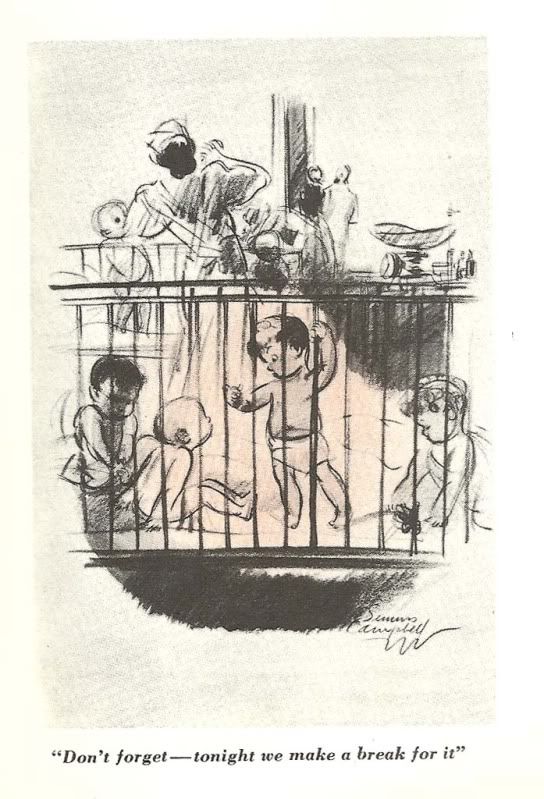 ”Another factor, equally true if in lesser degree, is the content of the cartoons themselves. As we said four years back in The Esquire Treasury, we long ago conceded to The New Yorker a near-monopoly on sophisticated whimsy, so we set out in our early days to get a corner on something known (if only to ourselves) as Whamsy. Based on the principle of aesthetics in the textbooks as Einfühlung, it represented as close an approach to audience participation as the cartoon could ever come, short of some printing press equivalent of 3D or Vista-Vision. The most memorable of this 'Wanna Make Something Out of It?' school was undoubtedly the drawing of a Petty girl looking you straight in the eye (in the manner of Uncle Sam in the recruiting posters, so that whatever angle you regard it there's no escaping that direct gaze) and captioned, simply but eloquently, 'Oh, you would, wouldn't you?'
”Another factor, equally true if in lesser degree, is the content of the cartoons themselves. As we said four years back in The Esquire Treasury, we long ago conceded to The New Yorker a near-monopoly on sophisticated whimsy, so we set out in our early days to get a corner on something known (if only to ourselves) as Whamsy. Based on the principle of aesthetics in the textbooks as Einfühlung, it represented as close an approach to audience participation as the cartoon could ever come, short of some printing press equivalent of 3D or Vista-Vision. The most memorable of this 'Wanna Make Something Out of It?' school was undoubtedly the drawing of a Petty girl looking you straight in the eye (in the manner of Uncle Sam in the recruiting posters, so that whatever angle you regard it there's no escaping that direct gaze) and captioned, simply but eloquently, 'Oh, you would, wouldn't you?'
“Cartoons like that brought scads of letters asking us to explain the point. We had to answer that there wasn't any, except as made by the mind of the beholder.
------------
Also E. Simms Campbell
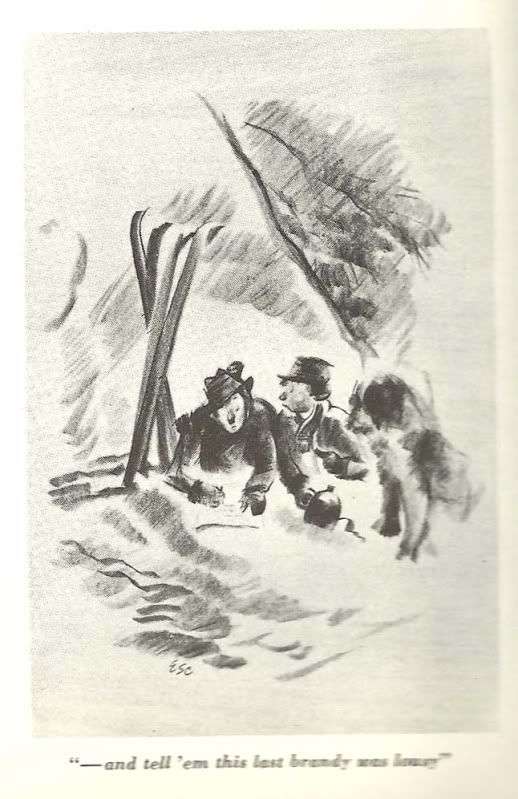 ”Now this cartoon, the pictorial twin of the Shaggy Dog Story in verbal humor, utterly pointless unless you are able and inclined to make it very pointed yourself, is present in considerable quantity in this book, culled as it is in so great measure from the magazine's early years. It is also, admittedly, very scarce in Esquire's pages in these latter years.
”Now this cartoon, the pictorial twin of the Shaggy Dog Story in verbal humor, utterly pointless unless you are able and inclined to make it very pointed yourself, is present in considerable quantity in this book, culled as it is in so great measure from the magazine's early years. It is also, admittedly, very scarce in Esquire's pages in these latter years.
------------
Jaro Fabry
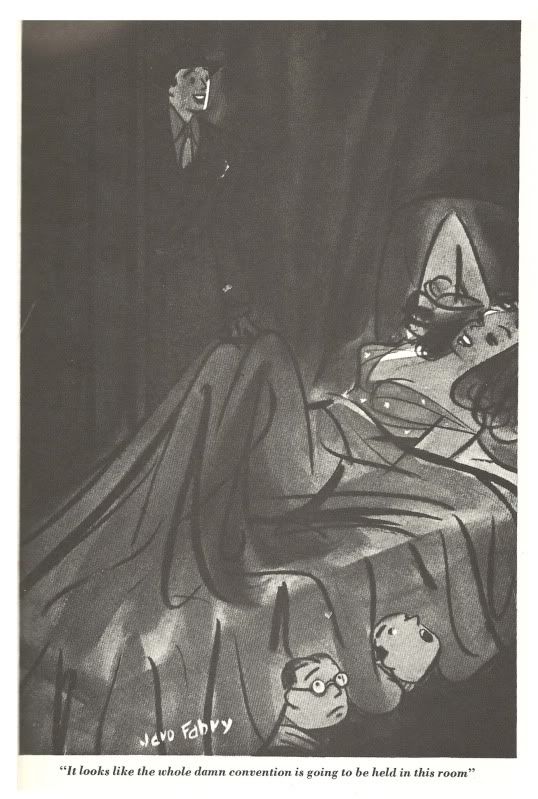 ”Again, it's a question of comparative novelty. We were first with this type of pictorial humor. But we considered it, like paprika, something to be used comparatively and with discretion. In the course of the years, other magazines have sprung up, based almost entirely on a distorted over-emphasis of this one aspect of Esquire's original formula, and they in turn have bred imitators of their imitatings, to a degree where vulgarity and bad taste have passed the point of no return.
”Again, it's a question of comparative novelty. We were first with this type of pictorial humor. But we considered it, like paprika, something to be used comparatively and with discretion. In the course of the years, other magazines have sprung up, based almost entirely on a distorted over-emphasis of this one aspect of Esquire's original formula, and they in turn have bred imitators of their imitatings, to a degree where vulgarity and bad taste have passed the point of no return.
------------
Rodney DeSarro can also be found here.
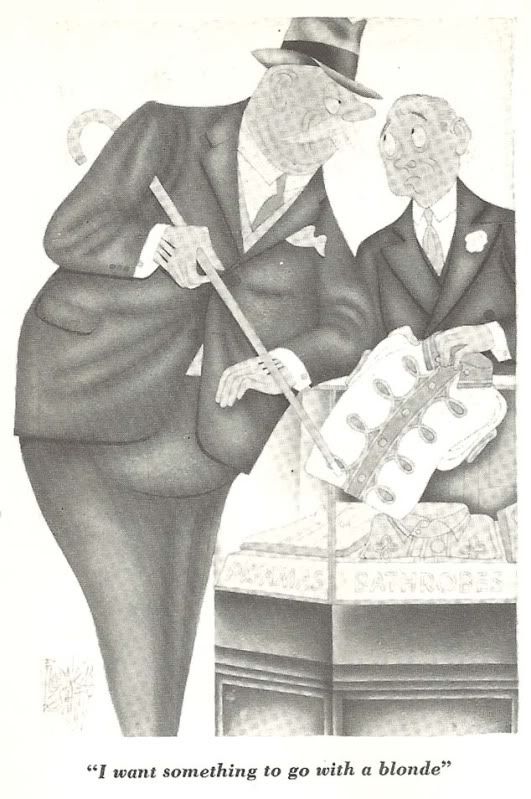 ”Here it is not a question of the race having caught up with the leader, but rather the pack having taken off at such a wild tangent, off course and across boundaries where, like another leader who knew the virtue of moderation in all things, we simply 'do not choose to run'.
”Here it is not a question of the race having caught up with the leader, but rather the pack having taken off at such a wild tangent, off course and across boundaries where, like another leader who knew the virtue of moderation in all things, we simply 'do not choose to run'.
------------
Abner Dean
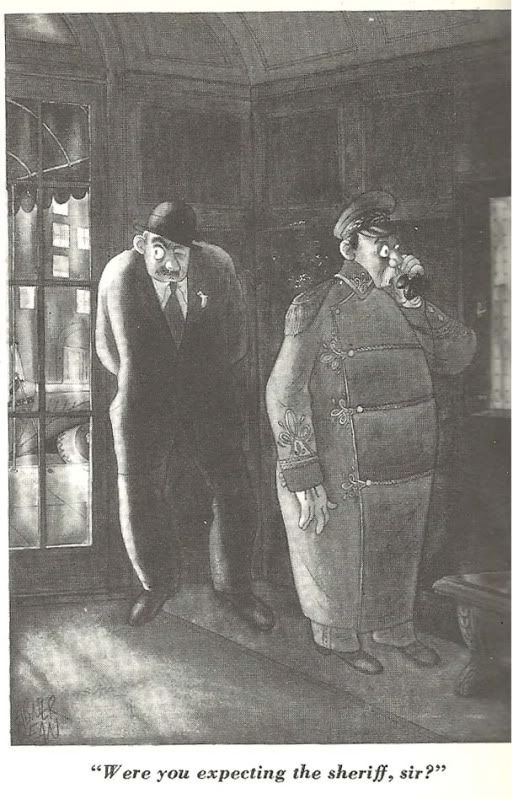 ”That, however, is a choice of future magazine policy that need not concern us here, except as it may affect your status as either a present or potential subscriber to Esquire, since this is a retrospective collection. Maybe it's even a sales argument for this book: 'Get 'em here, since you won't see their like in Esquire again.'
”That, however, is a choice of future magazine policy that need not concern us here, except as it may affect your status as either a present or potential subscriber to Esquire, since this is a retrospective collection. Maybe it's even a sales argument for this book: 'Get 'em here, since you won't see their like in Esquire again.'
------------
Gilbert Bundy.
 ”But actually, you will see as you go through the book, there is only a paprika-like sprinkling of the old-time Whamsy, even here, where the best four and twenty years of Esquire's cartoons have been assembled.
”But actually, you will see as you go through the book, there is only a paprika-like sprinkling of the old-time Whamsy, even here, where the best four and twenty years of Esquire's cartoons have been assembled.
------------
E. Simms Campbell
 ”Our one test, in selecting some five-hundred-odd cartoons among the ten-thousand-odd that have appeared in the magazine to date, was simply, 'Is it still funny today?' We'll feel satisfied if you are inclined to agree, in something over three out of ten cases, that it is. After all, .333 is still a winning batting average in any league.
”Our one test, in selecting some five-hundred-odd cartoons among the ten-thousand-odd that have appeared in the magazine to date, was simply, 'Is it still funny today?' We'll feel satisfied if you are inclined to agree, in something over three out of ten cases, that it is. After all, .333 is still a winning batting average in any league.
------------
E. Simms Campbell
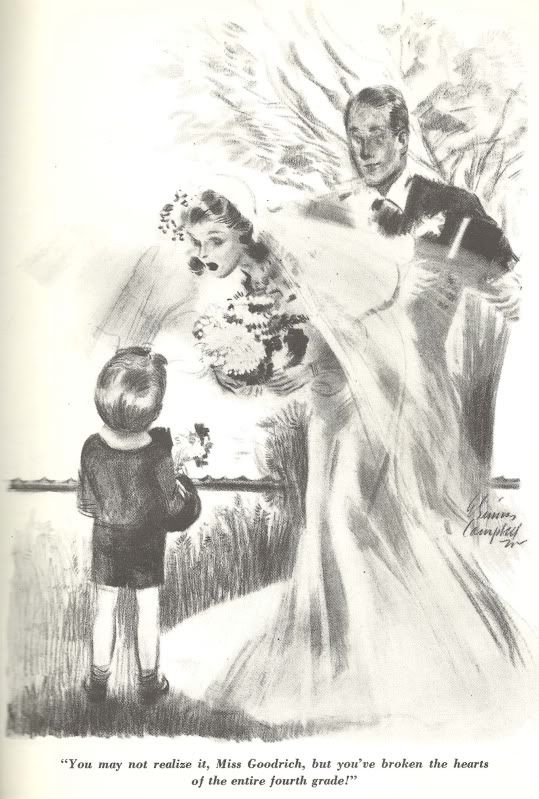 ”We are surprised to find how little the great majority of the drawings in this volume had dated, though they span almost a quarter-century. Maybe this supports our original contention, when the magazine was new, that we hoped to make a majority of our cartoons equally classifiable under the headings of both Art and Humor.
”We are surprised to find how little the great majority of the drawings in this volume had dated, though they span almost a quarter-century. Maybe this supports our original contention, when the magazine was new, that we hoped to make a majority of our cartoons equally classifiable under the headings of both Art and Humor.
------------
Howard Baer
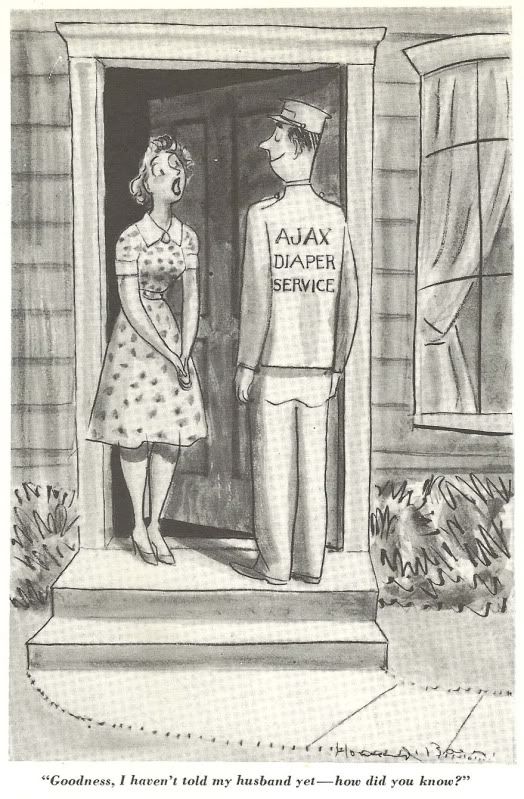 ”The contributor with the greatest number of cartoons in this book is E. Simms Campbell, with Howard Baer the runner-up. Campbell is unique in that, of the hundreds who have appeared in our pages since the first issue in the fall of '33, he is the only contributor, of either text or graphic features, never to have missed a single issue.
”The contributor with the greatest number of cartoons in this book is E. Simms Campbell, with Howard Baer the runner-up. Campbell is unique in that, of the hundreds who have appeared in our pages since the first issue in the fall of '33, he is the only contributor, of either text or graphic features, never to have missed a single issue.
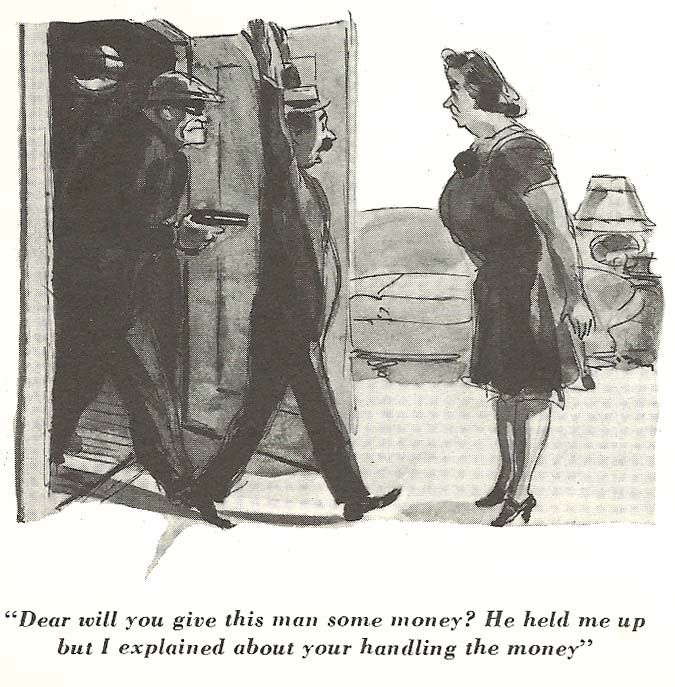 “More or less complete details about the other place in this volume where words are bunched together more than a sentence at a time. So without bunching any more together, here it is. The best of Esquire, twenty-four years worth, sunny side up.”
“More or less complete details about the other place in this volume where words are bunched together more than a sentence at a time. So without bunching any more together, here it is. The best of Esquire, twenty-four years worth, sunny side up.”












































































No comments:
Post a Comment